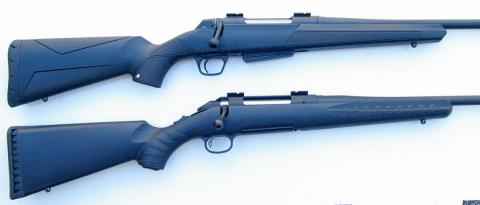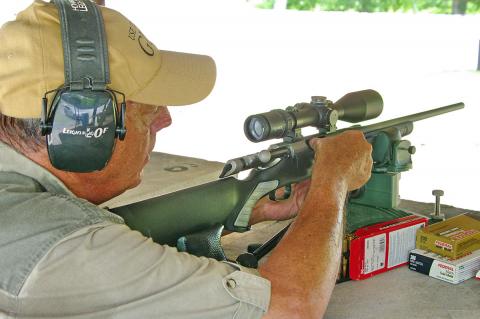
In case you haven’t noticed, most of the new bolt action centerfire rifles introduced over the last decade or so have embraced the “fat bolt” tri-lug design. I’m talking not only domestic manufacturers, but European makers as well. In fact, in recent years we’ve seen 15 such rifles introduced, 11 of which come from overseas. You know the kind I’m talking about – rifles like Ruger’s American, Winchester’s XPR and T-C’s Venture and Dimension. From overseas we’ve got the Merkel MHR16, Sauer 100 and 202, Lithgow LA102, Mauser M18, Roessler 3 and 6, Franchi Momentum, Heym SR30, Sabatti Saphire and Sauer 202, many of which were designed primarily with the American market in mind.
All the aforementioned guns share the same basic design elements; namely, a bolt that is about .150” +/- larger in diameter than a twin-lug Mauser type bolt, and three up-front locking lugs oriented on 120-degree centers. Because the locking lugs formed from the more corpulent bolt do not protrude beyond the diameter of the bolt body, only a round hole is needed in the receiver for a raceway. Another defining feature of the tri-bolt design is a shorter bolt rotation, i.e. handle lift.
Like I said, because all the aforementioned guns are relatively recent arrivals, one would think that the design itself is also recent. No so. Fact of the matter is, the first commercially successful tri-lug bolt action was introduced by Roy Weatherby with the introduction of his Mark V Magnum in 1957. It took nearly 50 years for gun makers to realize: “Hey, maybe this guy’s got something here!” It’s true the Mark V has 9 rather than 3 locking lugs, but the basics are the same, whether it’s 3 lugs, 2 rows of 3 lugs, or 3 rows of 3 lugs. Weatherby’s Mark V standard action, which is scaled down to the .30-06 cartridge family, has 2 rows of three lugs, as does the Austrian Roessler 6.

So, what advantages, if any, does the tri-bolt system offer? Well, aside from the faster cycling due to the shorter bolt rotation, the bolt handle’s shorter lift provides more clearance between the hand and the scope’s eyepiece. And because there are no keyways needed to accommodate protruding locking lugs, tolerances between the bolt and its raceway in the receiver can be held much tighter, which means virtually no radial play in the bolt, a smoother travel, and less tendency to bind. But perhaps the biggest advantage of all is the fact that tri-bolt actions can be produced more economically than Mauser types, especially if the receiver is tubular like so many of today’s rifles are. That’s not to say that all tri-lug rifles are budget class — the Sauer 202 and Roessler Titan as examples — but the majority of those 14 guns mentioned are in fact less expensive than the flagship models of manufacturers like Ruger and Winchester whose American and XPR models respectively, are priced about 40 percent less than the Hawkeye and Model 70. And several of the European guns like the Sauer 100, Mauser M18 and Merkel MHR18 are also priced competitively.
Personally, I think in retrospect Ruger and Winchester just might have second thoughts about the success of the American and XPR. By that I mean I think they assumed these tri-bolts were priced low enough so as not to compete with their respective flagship models, but they might have miscalculated. Generally speaking, the majority of the reviews on these guns, including the many of my own, have been very positive, primarily because their functioning and accuracy was at least as good or better than guns costing far more. It seems there are more shooters and hunters out there who are more than willing to forgo a little refinement and polish for performance. The lower price is just a bonus.–Jon R. Sundra
